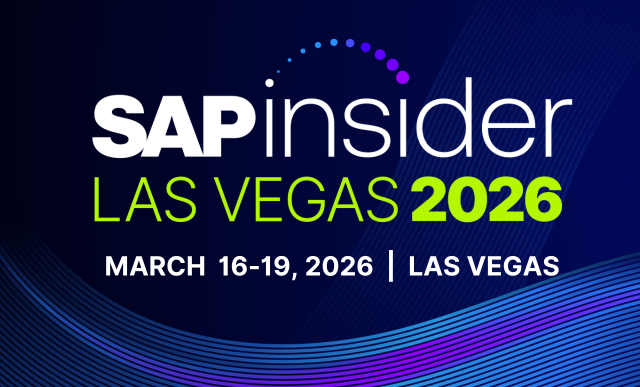From Automation to Agentic AI: Why Process Orchestration Is the Missing Link
Meet the Authors
Key Takeaways
Process orchestration is essential for integrating humans, AI agents, and LLMs in business processes, preventing silos and inefficiencies.
Camunda's six BPMN execution models enable a blend of deterministic control and AI autonomy, enhancing compliance and adaptability in workflows.
Strong AI governance through orchestration allows SAP teams to achieve predictable outcomes, improve transparency, and maintain compliance across various business processes.
As AI agents move from concept to colleague, enterprises face a new coordination challenge: how to keep humans, bots, and large language models (LLMs) working together within the same business process. Camunda’s latest report argues that process orchestration is the key to meeting this challenge.
The enterprise software vendor released its August 2025 white paper, “Process Orchestration Strategy in the Age of Machine Colleagues,” which examines how organizations can effectively coordinate deterministic automation, AI-enhanced workflows, and autonomous AI agents within unified business processes. The report arrives as AI adoption accelerates but implementation struggles persist across the enterprise landscape.
Camunda’s report distinguishes between three categories of machine work that enterprises must coordinate: deterministic automation for rule-based tasks requiring precision and compliance; AI workflows that embed bounded AI decision-making within predefined processes; and AI agents that autonomously pursue goals and adapt execution paths based on real-time context. The company argues that without process orchestration using standards like Business Process Model and Notation (BPMN) and Decision Model and Notation (DMN), even advanced AI implementations create silos, inefficiencies, and compliance risks.
Explore related questions
Six Execution Models Enable Hybrid Orchestration
Camunda’s framework identifies six distinct BPMN execution models that enable enterprises to blend deterministic control with AI autonomy:
- Deterministic flows provide full control of process actions to balance compliance, consistency, and flexibility with ad-hoc subprocesses. These are essential actions for regulated workflows where every step must be auditable.
- Dynamic flows allow autonomous agents to determine what happens as the process runs, using AI models, internal policies, and real-time process data to adapt execution paths without predefined logic.
- Escalation to humans ensures agents request human intervention when their confidence level is low or more data is needed, preventing AI from making high-stakes decisions without oversight.
- Event-driven response provides an autonomous structure for agents to respond to events, external messages, or timers to guide the next AI steps. This structure enables reactive rather than purely sequential workflows.
- Agents orchestrate subworkflows where tools call entire subprocesses rather than single system functions, allowing complex multi-step operations to be encapsulated and reused.
- Multi-agent orchestration enables agents to coordinate other agents for streamlined, scalable solutions where different AI systems handle specialized tasks within a larger business process.
These execution models can be combined within single workflows, allowing organizations to apply the right level of control and autonomy to different process segments based on business requirements. For example, a financial services workflow might use deterministic flows for regulatory compliance checks, dynamic flows for fraud pattern analysis, and escalation to humans for approving high-value transactions—all orchestrated through a unified BPMN model that maintains state and context across the entire process. This flexibility represents the core value proposition of process orchestration: rather than forcing enterprises to choose between rigid automation and unpredictable AI, orchestration provides a framework for coordinating both approaches within business processes that span people, systems, and AI agents.
What This Means for SAPinsiders
SAP teams gain stronger AI governance. Process orchestration gives SAP leaders a predictable framework to supervise AI models, agents, and automations running across SAP S/4HANA, SAP ECC migrations, and hybrid landscapes. This improves day-to-day transparency by ensuring all AI-generated decisions are captured in auditable trails. It also helps avoid inconsistent outcomes that can ripple across finance, procurement, or supply chain processes. As AI workloads increase, this governance becomes essential for maintaining reliability.
AI adoption becomes more operationally predictable. Case studies such as EY’s sevenfold throughput improvement demonstrate that agentic orchestration can translate AI investments into measurable productivity gains. SAP professionals will see faster exception resolution and reduced manual triage in areas like trade compliance, billing disputes, or customer inquiries. Over time, orchestration reduces implementation risk for AI-driven SAP enhancements.
Best practices for SAP environments continue to evolve. Early adopters, such as Cognizant’s regulated-market deployments, show that embedding human review steps and explicit decision logic helps maintain compliance in SAP-centric industries like financial services or healthcare. SAP teams can apply similar patterns by mapping agentic tasks into orchestrated subprocesses that work alongside existing workflows. With the right orchestration layer, SAP organizations can adopt AI agents confidently and sustainably.






